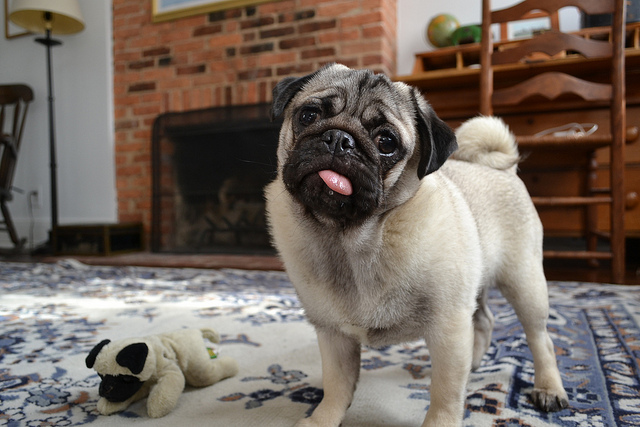12 Dog Breeds of China with Histories As Unique As Their Looks

by Kristina Lotz
With Chinese New Year coming up, now is a perfect time to learn more about the amazing dog breeds that were developed in China. From fluffy lap dogs and giant guardian breeds to hairless dogs and those covered in wrinkles, the Chinese have given us some of the most recognizable breeds in dogdom.
#1 – Chinese Shar-Pei
An easily recognized breed due to his wrinkles and petite ears, the Shar-pei is believed to have originated around the small village of Tai Lin around 200 B.C. They are a very protective breed and excel as guard dogs.
#2 -Chongqing dog
One of the dogs on this list you have probably never heard of, they are thought to be the predecessor of the Chinese Shar-Pei. According to the Chinese Chongqing Dog Promotional Committee, they are not a man-made breed, but a “natural” one. The Chinese bred them “solely for their working capabilities” without regard for conformation. There are known for being good protectors, workers, hunters (scent hound) and family companions.
#3 – Chinese Crested
This dog has quite the legend to go along with this unusual looks. It is believed he was developed by Chinese Mariners from the African hairless dogs. The sailors kept them aboard ships to hunt vermin carrying the Chinese plagues.
#4 – Chow Chow
Another easily recognized breed, the Chow Chow is most likely as old as the Shar Pei and was developed as an all-around farm dog including hunting, herding, pulling and even protection. They are one of the few breeds of dogs that can have a blue-black tongue.
#5 – Kunming Wolfdog
There is not too much information on this breed, which is actually a wolf-hybrid created in the 1950’s by mixing wolfdogs with shepherds. The breed bares a striking resembles to the German Shepherd Dog, so it’s possible they have some GSD in their lineage. In 1988, It was officially recognized in China, where they began using it for police and military.
#6 – Japanese Chin
Although the name implies a Japanese origin, this little lapdog was actually developed across the sea in China. According to the AKC, it was bred for the “sole purpose of accompanying the ladies of the Imperial Palace and warming the laps of Chinese aristocracy.” Beats having to work for your dinner.
#7 – Pekingese
Named after Peking (now Bejiing) the little Pekingese was held scared in China when they were first developed in the 8th Century. Only royals could own them and the punishment for stealing one was death.
#8 – Pug
Everyone knows this breed – fun, quirky and unmistakable with his pushed in nose and deep wrinkles. What most do not know is they are one of the oldest breeds, dating back before 400 B.C. China is the best guess for their origins, where the breed was a pet of the Buddhist monasteries in Tibet. Imagine trying to mediate with a pug bouncing around?
#9 – Shih Tzu
There is not a lot known about the origins of this adorable lap dog. What we do know is that the Shih Tzu is an old breed, probably dating around 624 A.D. and was one of the Tibetan holy dogs, due to its resemblance to the lion.
#10 – Xiasi Quan Dog
This is another Chinese breed you have probably not heard of before. They were bred in the town of Xiasi as hunting dogs. They are known for being fast, agile, and easy to train.
#11 – Tibetan Mastiff
This easy to identify breed has been around for centuries, though there are no records to give a specific dates, written accounts do mention a large dog as early as 1100 BC. They are known for being a great guardian of livestock or the home. They are also prized, last year a golden-haired puppy was sold in China for $2 million (dog on left in picture).
#12- Tibetan Spaniel
Another monastery dog and part of the “lion dogs” culture in China, is the Tibetan spaniel. Originally, the breed varied greatly in looks depending on where it had been bred. According to the AKC, “prized as a pet and companion, it was considered a very useful animal by all classes of Tibetans.” They were especially good for alert-barking.
